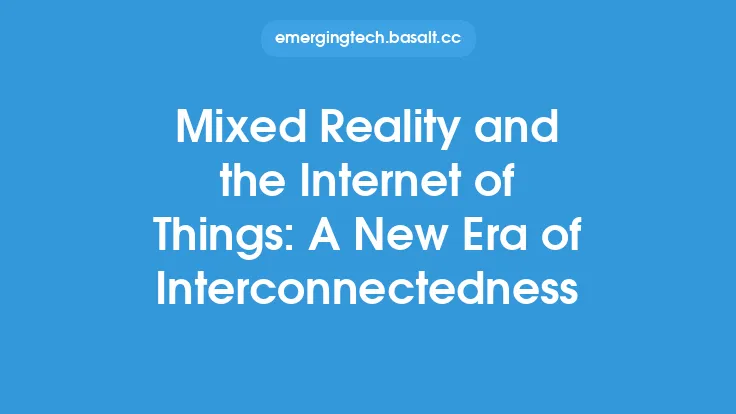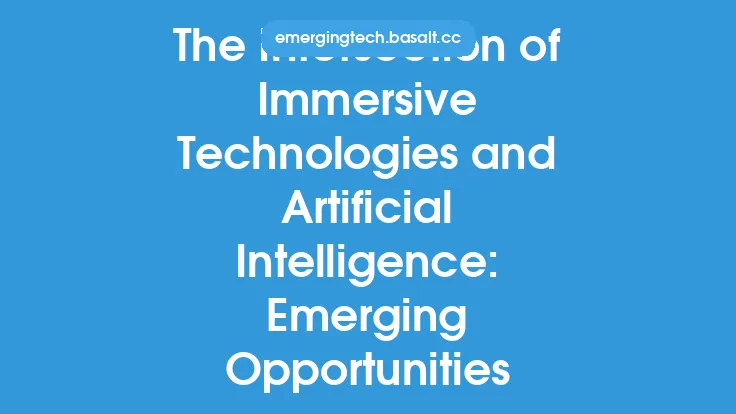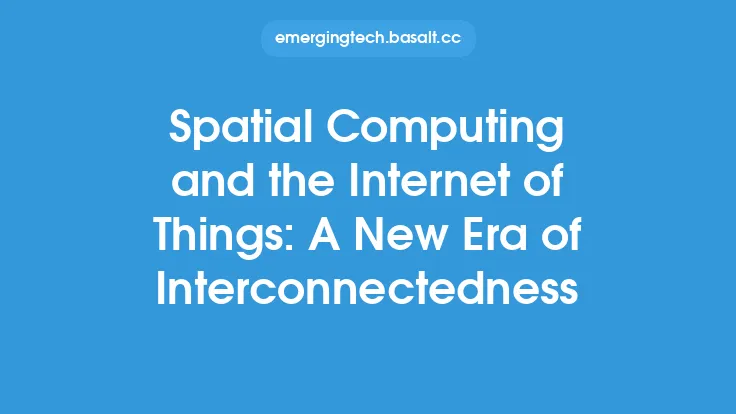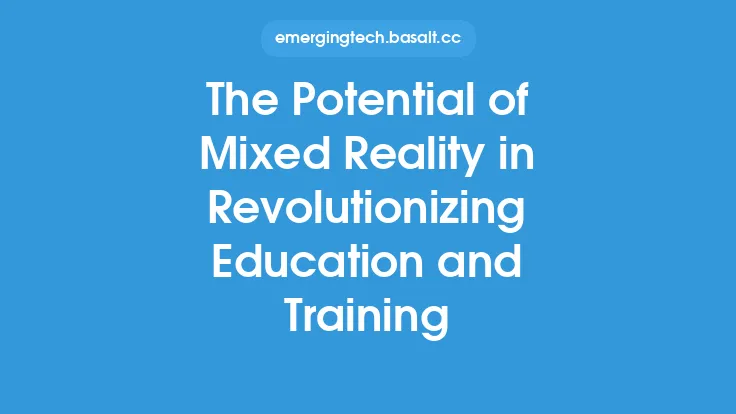The world of education is on the cusp of a revolution, driven by the advent of immersive technologies. These technologies, which include Virtual Reality (VR), Augmented Reality (AR), and Mixed Reality (MR), are transforming the way we learn and interact with educational content. By providing a fully immersive and interactive environment, these technologies are making learning more engaging, effective, and enjoyable. In this article, we will explore the current state of immersive technologies in education, their benefits, and the potential they hold for the future of learning.
Introduction to Immersive Technologies
Immersive technologies are a class of technologies that simulate a three-dimensional environment, allowing users to interact with virtual objects and environments in a highly immersive and interactive way. VR, AR, and MR are the three main types of immersive technologies. VR creates a completely virtual environment, shutting out the physical world. AR, on the other hand, overlays virtual information onto the real world, enhancing it. MR combines elements of both VR and AR, allowing users to interact with virtual objects in the real world. These technologies have been gaining traction in various fields, including education, where they are being used to create innovative and effective learning experiences.
Benefits of Immersive Technologies in Education
The benefits of immersive technologies in education are numerous. Firstly, they provide a highly engaging and interactive learning experience, which can lead to increased student motivation and participation. Immersive technologies can also simulate real-world environments and scenarios, allowing students to practice and learn in a safe and controlled setting. This is particularly useful for subjects such as science, technology, engineering, and mathematics (STEM), where hands-on experimentation is essential. Additionally, immersive technologies can provide personalized learning experiences, tailored to the individual needs and abilities of each student. This can lead to improved learning outcomes and increased student satisfaction.
Applications of Immersive Technologies in Education
Immersive technologies have a wide range of applications in education, from primary school to university level. In primary school, immersive technologies can be used to create interactive and engaging learning experiences, such as virtual field trips and interactive stories. In secondary school, immersive technologies can be used to teach complex subjects such as physics and chemistry, by simulating real-world experiments and scenarios. In university, immersive technologies can be used to provide students with hands-on experience in fields such as medicine, engineering, and architecture. Immersive technologies can also be used to create virtual labs, where students can conduct experiments and investigations in a safe and controlled environment.
Technical Requirements for Immersive Technologies in Education
The technical requirements for immersive technologies in education vary depending on the specific technology being used. For VR, a high-performance computer or gaming console is required, along with a VR headset and controllers. For AR, a smartphone or tablet with a high-quality camera and display is required. For MR, a specialized headset such as the Microsoft HoloLens is required. In addition to the hardware, immersive technologies also require specialized software and content, such as 3D models, virtual environments, and interactive simulations. The development of this content requires specialized skills and expertise, including 3D modeling, programming, and instructional design.
Challenges and Limitations of Immersive Technologies in Education
Despite the many benefits of immersive technologies in education, there are also several challenges and limitations. One of the main challenges is the high cost of the hardware and software required to support immersive technologies. This can make it difficult for schools and universities to adopt these technologies, particularly in resource-constrained environments. Another challenge is the need for specialized skills and expertise to develop and implement immersive technologies. This can include 3D modeling, programming, and instructional design, which can be time-consuming and expensive to acquire. Additionally, there are also concerns about the potential health and safety risks associated with immersive technologies, such as eye strain, headaches, and motion sickness.
Future of Immersive Technologies in Education
The future of immersive technologies in education is exciting and full of potential. As the cost of the hardware and software continues to decrease, we can expect to see more widespread adoption of immersive technologies in schools and universities. We can also expect to see the development of new and innovative applications of immersive technologies, such as virtual and augmented reality field trips, interactive simulations, and personalized learning experiences. Additionally, the integration of immersive technologies with other emerging technologies such as artificial intelligence, blockchain, and the Internet of Things (IoT) is likely to create new and innovative opportunities for education and learning.
Best Practices for Implementing Immersive Technologies in Education
To get the most out of immersive technologies in education, it is essential to follow best practices for implementation. This includes providing teachers and instructors with the training and support they need to effectively integrate immersive technologies into their teaching practices. It also includes ensuring that the immersive technologies are aligned with the learning objectives and outcomes, and that they are used in a way that is engaging, interactive, and fun. Additionally, it is essential to monitor and evaluate the effectiveness of immersive technologies, using metrics such as student engagement, motivation, and learning outcomes. By following these best practices, educators can ensure that immersive technologies are used in a way that is effective, efficient, and beneficial to students.
Conclusion
Immersive technologies have the potential to revolutionize the world of education, providing students with highly engaging, interactive, and effective learning experiences. From primary school to university level, immersive technologies can be used to teach a wide range of subjects, from science and mathematics to language and history. While there are challenges and limitations to the adoption of immersive technologies, the benefits are clear, and the future is exciting and full of potential. As educators, policymakers, and technologists, it is essential that we work together to ensure that immersive technologies are used in a way that is effective, efficient, and beneficial to students, and that we provide them with the skills and knowledge they need to succeed in the 21st century.





